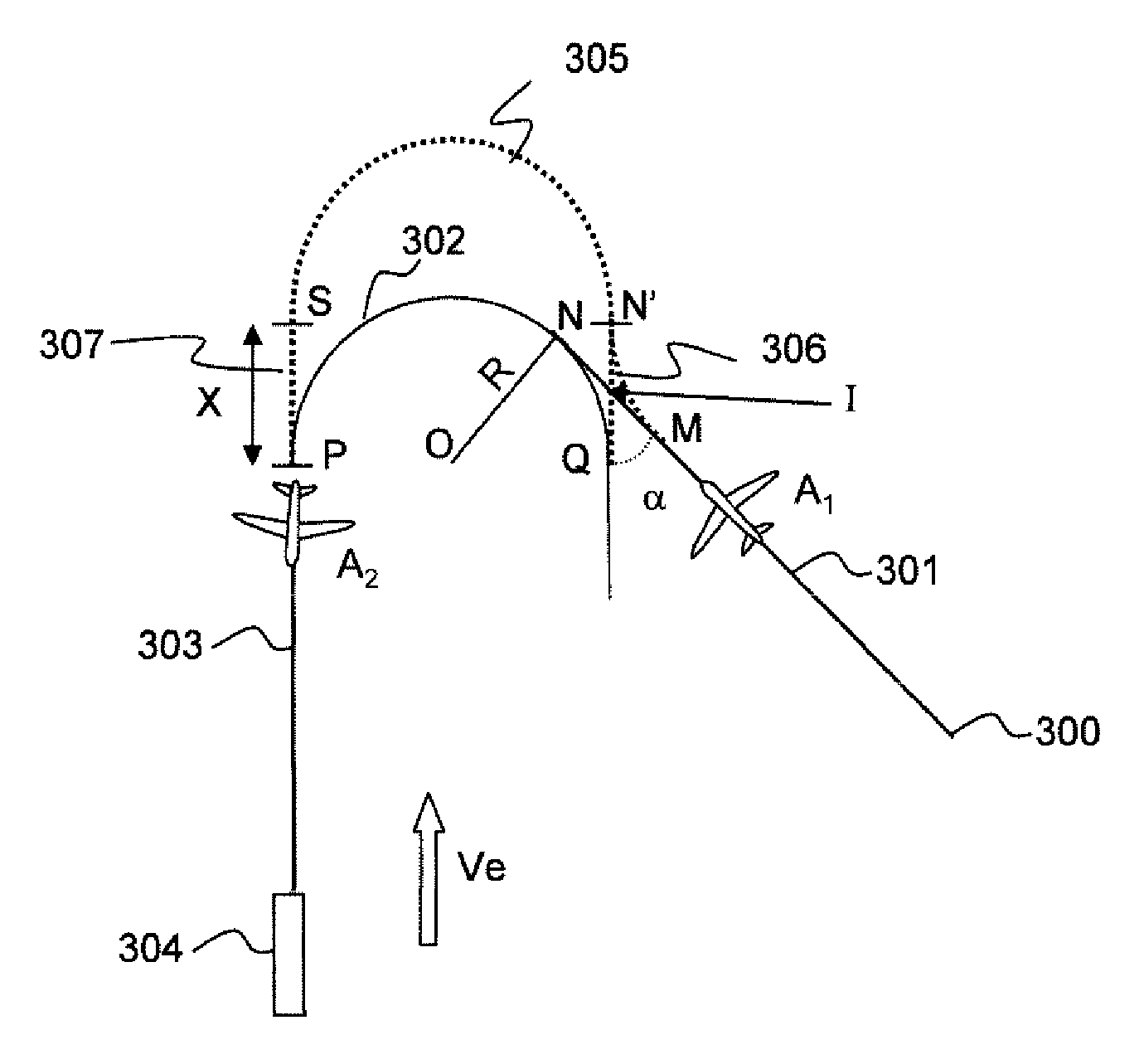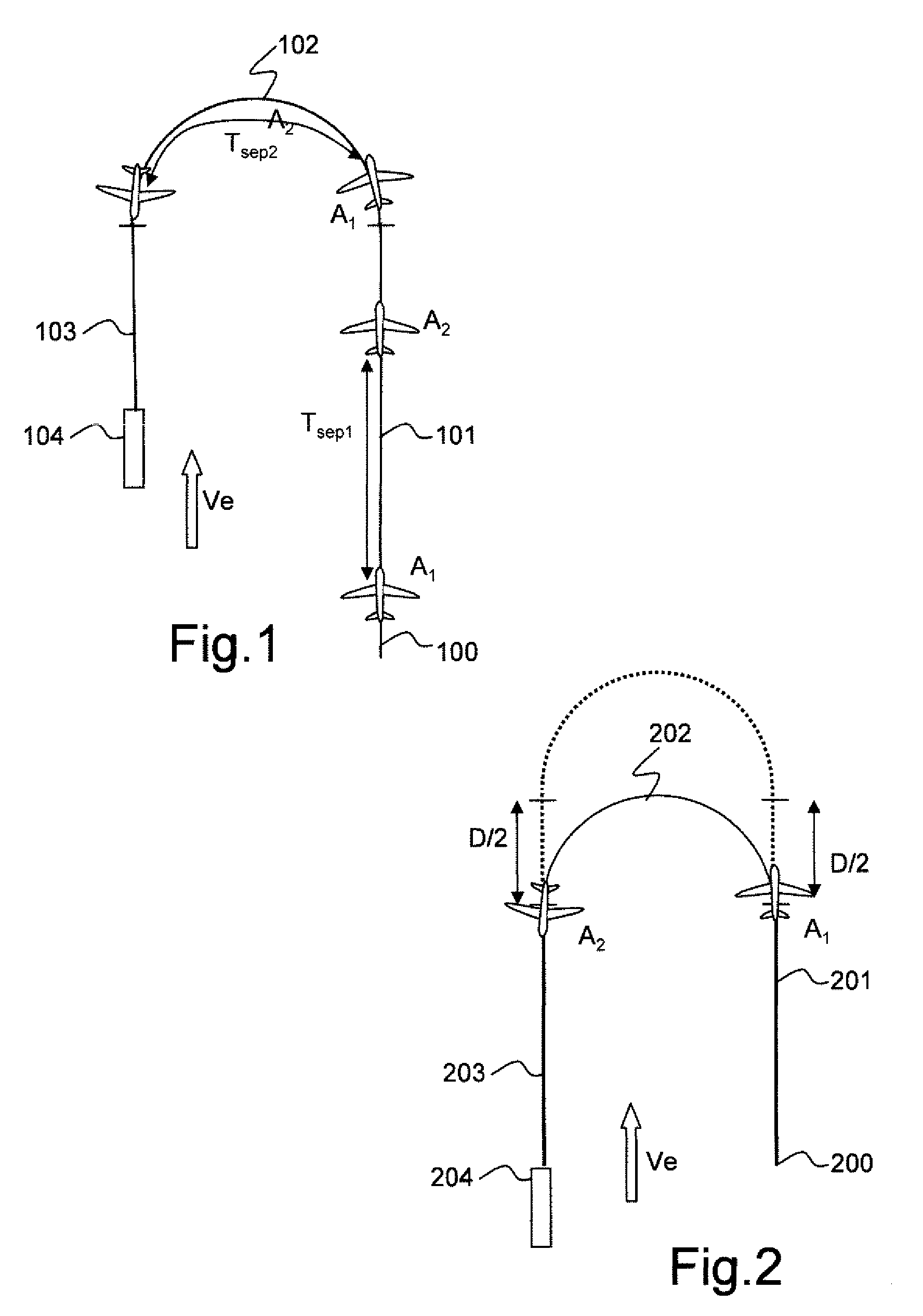Method for managing the flight of an aircraft
a flight management and aircraft technology, applied in the direction of aircraft stabilisation, anti-collision system, navigation instruments, etc., can solve the problems of limiting effectiveness and reactivity, becoming very difficult to maintain, etc., to optimize the runway occupancy time, not increasing the landing distance, and lengthening or reducing the said trajectory
- Summary
- Abstract
- Description
- Claims
- Application Information
AI Technical Summary
Benefits of technology
Problems solved by technology
Method used
Image
Examples
Embodiment Construction
[0033]FIG. 2 represents a first exemplary implementation of the method according to the invention. A first aircraft A1 flying along a trajectory 200 trails a second aircraft A2 flying along the same trajectory 200. The trajectory comprises an arrival segment 201, a turn 202 and a final segment 203 terminating at a landing runway 204. The arrival segment 201 and the final segment 203 are parallel. The first aircraft A1 is positioned at the end of the arrival segment 201. The second aircraft A2 is positioned at the start of the final segment 203. The two aircraft are subjected to a wind Ve: tailwind for the first aircraft A1 and headwind for the second A2. As in the example of FIG. 1, the separation is no longer maintained for a time equal to the initial separation time. This is a conventional case where two aircraft are following one another during an approach procedure necessitating a turn to take up alignment with the axis of the runway with a considerable wind. The obligation to p...
PUM
 Login to View More
Login to View More Abstract
Description
Claims
Application Information
 Login to View More
Login to View More - R&D
- Intellectual Property
- Life Sciences
- Materials
- Tech Scout
- Unparalleled Data Quality
- Higher Quality Content
- 60% Fewer Hallucinations
Browse by: Latest US Patents, China's latest patents, Technical Efficacy Thesaurus, Application Domain, Technology Topic, Popular Technical Reports.
© 2025 PatSnap. All rights reserved.Legal|Privacy policy|Modern Slavery Act Transparency Statement|Sitemap|About US| Contact US: help@patsnap.com



